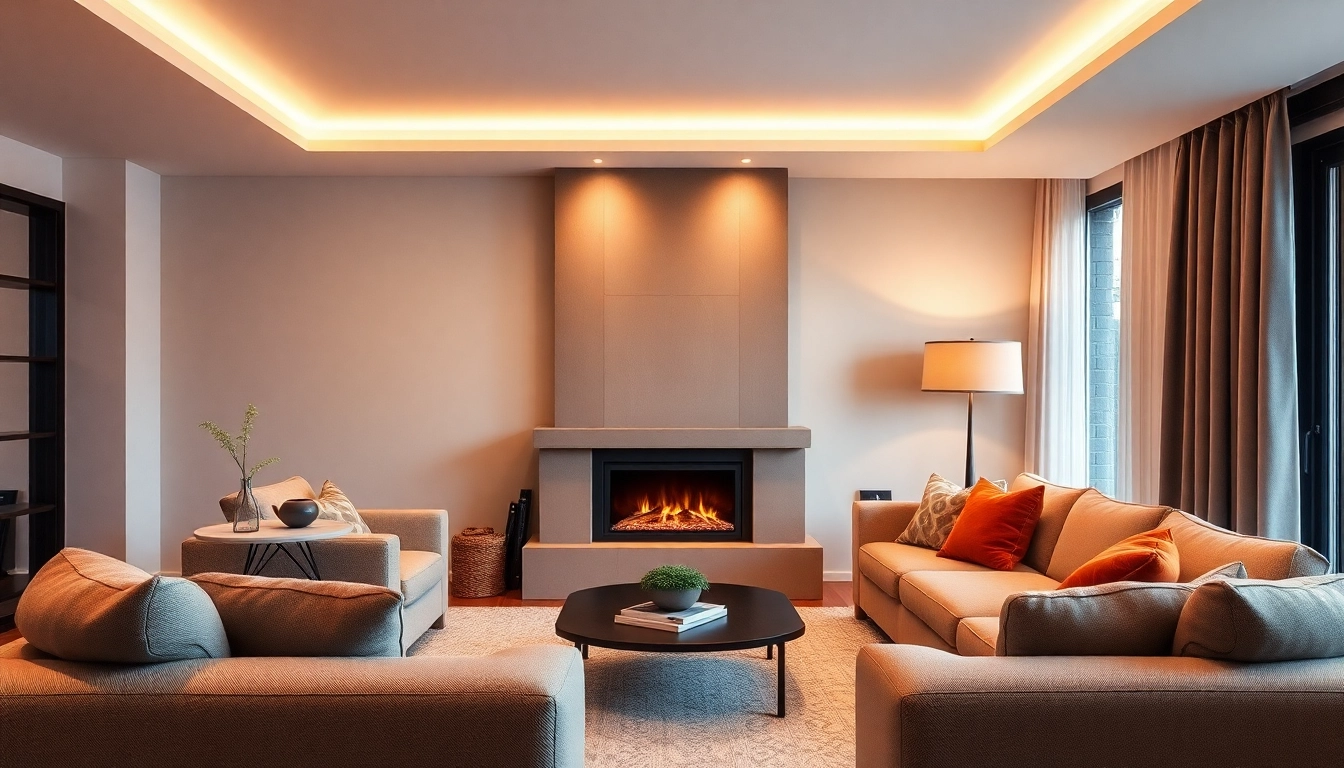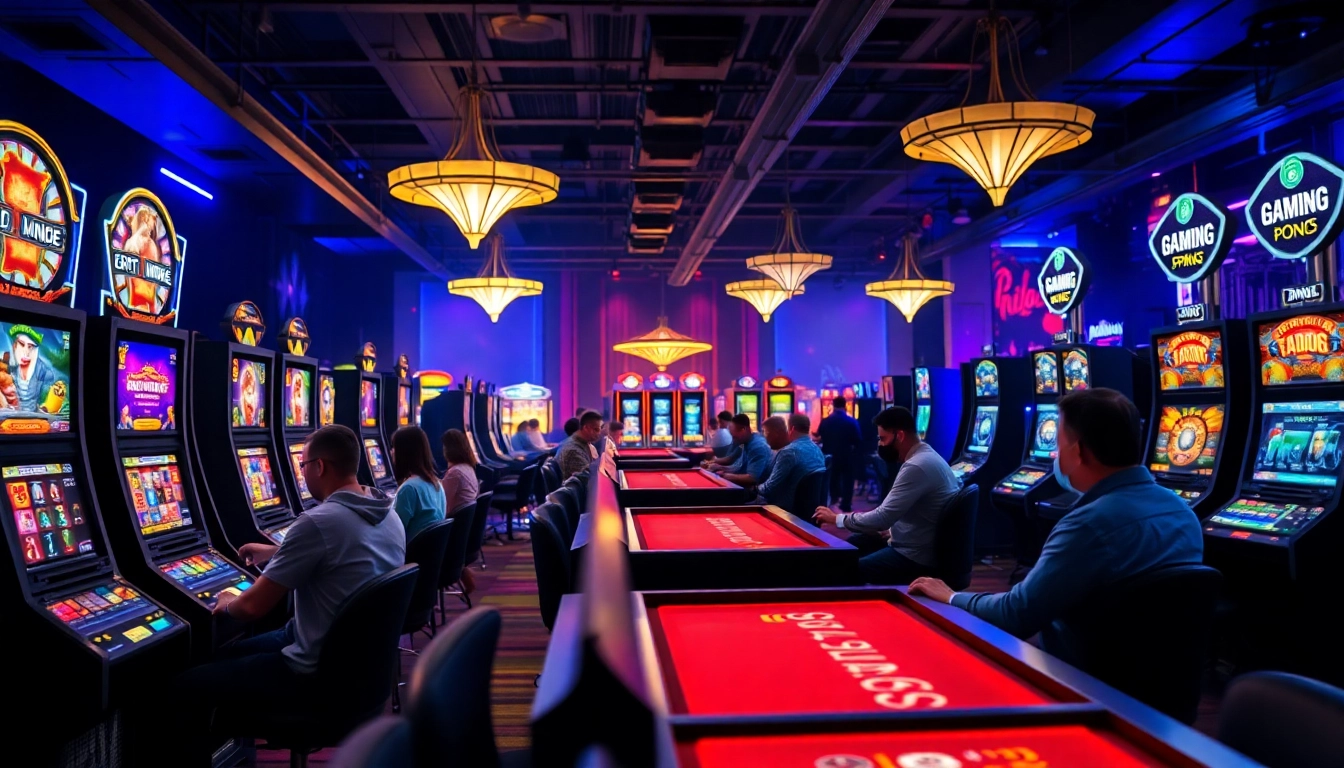
Understanding Water Vapor Electric Fireplaces
What is a Water Vapor Electric Fireplace?
A water vapor electric fireplace is a modern innovation in home heating and decoration that uses ultrasonic technology to simulate the appearance of real flames. Unlike traditional fireplaces that produce actual fire, these electric units create a mesmerizing flame effect using vaporized water, allowing users to enjoy a warm ambiance without the risk of heat or real flames. This technology not only enhances the aesthetic appeal of a room but also contributes to a safer home environment, particularly in households with children and pets.
How Water Vapor Technology Works
The operation of water vapor electric fireplaces revolves around a simple yet effective mechanism. When water is added to the fireplace’s reservoir, the unit uses ultrasonic technology to produce a fine mist that resembles flames. This mist is illuminated by LED lights to generate a realistic flame effect. The result is a captivating visual display that mimics the flickering of fire, creating an inviting atmosphere.
Most models come equipped with features like adjustable flame intensity and color variations, allowing users to personalize their ambiance according to their preferences. Additionally, since these units do not emit any heat, they can operate safely and continuously throughout the year without contributing to household temperature increases. Understanding the precise workings of this technology will empower you to make an informed purchase when considering a water vapor electric fireplace.
Benefits of Electric Fireplaces Using Water Vapor
Water vapor electric fireplaces offer a multitude of benefits that make them an appealing choice for homeowners:
- Safety: Since these fireplaces do not produce any real flames or heat, they are safe for indoor use without the risks associated with traditional fireplaces, such as burns or house fires.
- Eco-Friendliness: These units operate using water vapor and electricity, meaning they do not release harmful emissions. This makes them a compelling choice for environmentally conscious consumers.
- Versatility: They can be installed in various locations within a home, as they do not require venting or a chimney. This allows for unique placement options in living rooms, bedrooms, or even bathrooms.
- Year-Round Use: Unlike traditional fireplaces, water vapor models can operate without generating heat, making them ideal for year-round enjoyment, regardless of the season.
Key Features to Look For
Safety Features for Your Home
When investing in a water vapor electric fireplace, safety features should be at the forefront of your decision-making. Some essential safety elements to consider include:
- Automatic Shut-off: Many models are equipped with automatic shut-off features that activate when the water level is too low, preventing damage to the unit and reducing the risk of overheating.
- Cool-to-Touch Surfaces: The exterior of a water vapor electric fireplace remains at a safe temperature, ensuring that curious pets and children can interact with the appliance without the risk of burns.
- Child Locks: Consider fireplaces that come with child safety locks or settings that limit the operational features when children are present in the vicinity.
Energy Efficiency and Environmental Impact
Water vapor electric fireplaces are generally more energy-efficient than other heating methods. They utilize less energy while providing a stunning flame effect, making them a cost-effective option for homeowners. In addition, because they generate no emissions, they contribute to improved air quality indoors, reducing your carbon footprint.
Moreover, many models allow users to adjust the intensity and brightness of the flame, which can further reduce energy consumption when a softer ambiance is desired. When comparing different models, check for energy ratings that inform you about their efficiency levels.
Design Options and Customization
One of the key advantages of water vapor electric fireplaces is their aesthetic versatility. They come in various styles, sizes, and finishes, ensuring that there is a suitable option for every decor:
- Wall-Mounted Units: Perfect for small spaces, wall-mounted models can create an eye-catching focal point without occupying valuable floor space.
- Freestanding Models: These units can be moved around as needed and often feature more versatile aesthetics to complement various interior styles.
- Inserts: If you have an existing fireplace, consider a water vapor insert, which can transform an old fireplace into a modern electric fireplace with a stunning flame effect.
Installation and Maintenance
Easy Installation Process
The installation process for a water vapor electric fireplace is generally straightforward, which can vary based on the specific model:
- Placement: Select a location where the fireplace will stand out while also fitting well with the room’s design. Ensure there’s a power outlet nearby.
- Assemble the Unit: Follow the manufacturer’s guidelines to assemble any required components. This usually involves attaching any decorative elements and ensuring that the reservoir for water is properly connected.
- Fill the Reservoir: Add distilled or filtered water to the reservoir, ensuring you do not overfill.
- Power On: Plug in the fireplace and turn it on to check for correct operation.
Most units are designed for easy installation, requiring no significant modifications to your home. However, following the manufacturer’s instructions is crucial for ensuring safe and effective operation.
Routine Maintenance Tips
To prolong the life of your water vapor electric fireplace and ensure optimal performance, consider the following maintenance tips:
- Cleaning the Water Reservoir: Regularly empty and clean the water tank to prevent any mineral buildup. Use distilled water when possible to minimize scale formation.
- Wipe Down Surfaces: Regularly dust and clean the exterior of the fireplace to keep it looking new and enhance its visual appeal.
- Check for Software Updates: If your unit has smart features, ensure that you keep the software updated as recommended by the manufacturer, which can enhance its performance and feature offerings.
Common Issues and Solutions
While water vapor electric fireplaces are generally reliable, you may encounter a few common issues:
- Low Flame Height: If you notice a decrease in flame height, check to see if the water level is low or needs cleaning.
- Unit Won’t Operate: This could be due to a power issue. Ensure that the unit is plugged in and check the circuit breaker if necessary.
- Water Leakage: If you notice water pooling around the fireplace, inspect the water reservoir for cracks or improper seals.
Addressing these issues promptly can help you avoid long-term damage and ensure that your fireplace continues to perform at its best.
Comparing Water Vapor Fireplaces with Traditional Fireplaces
Heat Production vs. No Heat Options
One of the most significant distinctions between water vapor electric fireplaces and traditional fireplaces is heat production. Traditional models, either wood or gas, are typically used for heating purposes and can significantly raise the temperature in a room. In contrast, water vapor fireplaces do not produce heat, making them ideal for ambiance without altering indoor temperatures. This no-heat option can be particularly beneficial in warmer climates or for homes where additional heating is unnecessary.
Cost Considerations: Initial and Long-Term
While the initial investment in a water vapor electric fireplace can vary widely based on brand and features, they generally fall within a competitive price range when compared to traditional fireplaces. Furthermore, the long-term costs are significantly lower because they do not require venting, additional installation costs, or ongoing fuel expenses. Maintaining a water vapor unit is less costly due to lower energy consumption and reduced cleaning needs, making them more economical in the long run.
Decorative Aesthetic vs. Functional Heating
The aesthetic appeal of a water vapor electric fireplace is undeniable. Many consumers choose these units for their vibrant flame effects and customizable settings. In contrast, traditional fireplaces serve a dual purpose, offering both heat and ambiance. However, as the demand for versatile home decor rises, many homeowners are prioritizing aesthetics, leading to the increasing popularity of water vapor models. They allow for creative visual expression without the added maintenance and safety concerns of traditional fireplaces.
Choosing the Right Water Vapor Electric Fireplace for You
Top Models Reviewed
Several models are available on the market, each with unique features and pricing structures. Some popular models include:
- Dimplex Opti-Myst: Known for its impressive three-dimensional flame effect, this model combines technology and realistic aesthetics, making it a top choice for both residential and commercial spaces.
- Aquafire: This brand is celebrated for its variety of designs, catering to modern and classic tastes with a robust flame quality and easy-to-use features.
- Sunlitup Electric Fireplace: Featuring an automatic water inlet and drainage system, the Sunlitup model provides ease of use and a range of customizable settings.
Considerations for Different Spaces
When selecting the right water vapor electric fireplace, consider the following factors:
- Size of the Room: Choose a unit that fits well within the space without overpowering the existing decor. Smaller units work better in cozy nooks, while larger models can be the centerpiece of a spacious room.
- Design Aesthetic: Evaluate the overall design theme of your room. A contemporary fireplace may not suit a traditional interior.
- Usage Needs: Consider how often you want to use the fireplace. If only for occasional use, a model with fewer features may suffice. For daily ambiance, investing in a higher-end model may be worth it.
Customer Feedback and Recommendations
Customer reviews provide valuable insights into product performance, durability, and satisfaction. Many users praise water vapor electric fireplaces for their stunning visuals and ambiance-enhancing capabilities, citing improvements in overall home comfort. Reviews often highlight aspects such as easy installation, safety features, and energy efficiency as significant selling points.
Ensuring a thorough comparison of user feedback will guide potential buyers toward selecting a model that best suits their needs, avoiding common pitfalls that could arise from less favorable options. This step is essential, as it helps you align your purchase with real user experiences.








